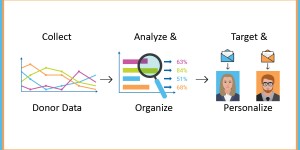Reach a wider audience with a bit of imagination.
Whatever you call it — variable data printing, one to one printing, print personalization—you probably associate this marketing approach with increased response rates for direct selling. Talk to each recipient by name and make them a sales pitch based on something you know about them, such as income, demographics or past purchase patterns.
Done right, this approach can be enormously profitable. But what happens if you think about one to one printing only in terms of the direct sale? Could you be missing other opportunities? Let’s look at three bottom-line one to one printing examples that are often overlooked.
Lead Generation
Sometimes basic lead generation—getting that first customer contact—is just as powerful as the one that generates the sale.
Buick Division, General Motors, found this out when it created a series of personalized direct mail pieces to establish a “pre-ownership” feeling among prospective car buyers. It targeted both current and former Buick owners, as well as owners of competitive makes of vehicles. Over a series of direct mail pieces, Buick asked for feedback on what recipients were looking for in a car. The final brochure incorporated this feedback, including preferred model and features.
While this program started out as “consumer research,” ultimately, Buick sold 20,000 automobiles and resulted in $494 million in sales revenue.
Regular Customer Communications
You don’t have to be selling big ticket items with one to one to boost the bottom line. Consider the opportunities in everyday customer contacts.
To more effectively communicate with its customers (both active and inactive), for example, one Pontiac-Buick dealership decided to slice its database by type of automotive service, such as emissions checks, tune-ups and brake service. Then, the dealership sorted this data by date of next service, such as all customers with emissions checks coming up within the next 60 days. They used this information to generate weekly alerts to car owners in advance of the recommended service dates for their vehicles.
By communicating with car owners this way, Jay Pontiac-Buick saw its service department profits rise to 18% within the first six months of the campaign, compared to 12% in the prior six months
Marketing Collateral
Top marketers are gradually realizing the benefits of personalizing all aspects of their marketing collateral, not just sales pitches.
Take the example of insurance company HealthNow, which used to send its group plan subscribers bulky 70-page information packages. Subscribers complained that having so much information was confusing, and HealthNow was spending a lot of money on inquiries to its call center. So the insurer decided to personalize its guides. First, it customized them down to the group plan level, only providing information specific to each individual’s plan. Then it personalized each booklet with hundreds of variable fields based on each subscriber’s individual health plan.
Today, subscribers now rate the effectiveness of these guides 4.4 out of 5. Not only this, but HealthNow has saved money by reducing its production costs by 50 to 60% and reducing the number of calls to its call center.
This does not exhaust the uses of one to one printing beyond immediate revenue generation, of course. Marketers are applying one to one print technology for other uses, such as pre-filling applications to boost response rates and using personalized information on bills and invoices to increase on-time payments.
So think outside of the direct-sales box. There might be even more bottom-line-boosting opportunities awaiting you.
More Insights to Enjoy:
+ Think E-Media Beats One to One Printing? Think Again! {Consumers Love Getting Mail}
+ One to One Personalization Keeps Print Relevant
+ Finding the Right Data is Easier Than You Think
© Action Graphics, 2010. Article taken from Action Insights, Vol. 1, Issue 3. Sign up today to receive future issues of our newsletters.


